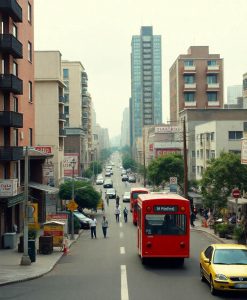Living through a busy day in the city, you might notice how your chest feels a little tighter in the afternoons, or how a walk through the neighborhood leaves you coughing more than you used to. These sensations aren’t just annoying—they’re signals that our urban environments could be affecting our respiratory health in ways that are often overlooked. Research now shows that one in ten asthma cases could be prevented if cities prioritized cleaner air and more green spaces, transforming urban living into a healthier experience.
When I think about the air I breathe while navigating city streets, I imagine how a gentle breeze might carry away some of the pollutants that tend to linger among crowded buildings and busy roads. It’s easy to forget that our surroundings—what we see, smell, and breathe—directly influence our health. Dense urban development often leads to higher concentrations of air pollution, especially from vehicle emissions and industry, which can irritate the lungs over time. For children and adults alike, this persistent exposure raises the risk of developing asthma, a condition that can turn simple breathlessness into a daily struggle.
The connection between urban environments and respiratory health is clear: the fewer green spaces we have, the more polluted the air tends to be. Parks, trees, and natural landscapes act as lungs for the city, filtering out pollutants and providing a sanctuary for residents to breathe more freely. When green spaces are limited, the air stays heavy with particulates and toxins, increasing the likelihood of asthma onset. It’s a cycle that can be broken by thoughtful urban planning—creating cities that breathe alongside their residents rather than choking them.
Imagine walking through a city where every street is lined with trees, where parks are woven into neighborhoods, and where air quality monitors are a routine part of city life. Such environments don’t just beautify the city—they actively lower the risk of respiratory diseases like asthma. The scientific findings underscore that targeted improvements—reducing pollution, increasing green spaces, and designing cities to promote cleaner air—could prevent a significant number of asthma cases each year.

For city planners, public health officials, and residents, this research is a call to action. It’s a reminder that the health of our lungs is intertwined with how we shape our urban spaces. Small changes—adding more trees along busy streets, investing in cleaner transportation options, creating accessible parks—can have a profound impact. These measures turn urban areas from potential health hazards into environments that nurture and protect our respiratory well-being.
In our daily lives, we might not think about the long-term effects of living in a dense, polluted city. But understanding that one in ten asthma cases could be avoided through better urban design empowers us to advocate for healthier environments. It’s about transforming our cities into places where breathing comfortably is a given, not a privilege.
Creating healthier urban spaces isn’t just about aesthetics; it’s about safeguarding our future health. Each step toward cleaner air and more greenery is a step toward reducing asthma risk for ourselves and generations to come. As we walk, work, and play in these environments, we become part of a movement that values health as much as progress.
Learn More: One in ten asthma cases can be avoided with a better urban environment
Abstract: The combination of air pollution, dense urban development and limited green spaces increases the risk of asthma in both children and adults.
Link: Read Full Article (External Site)


